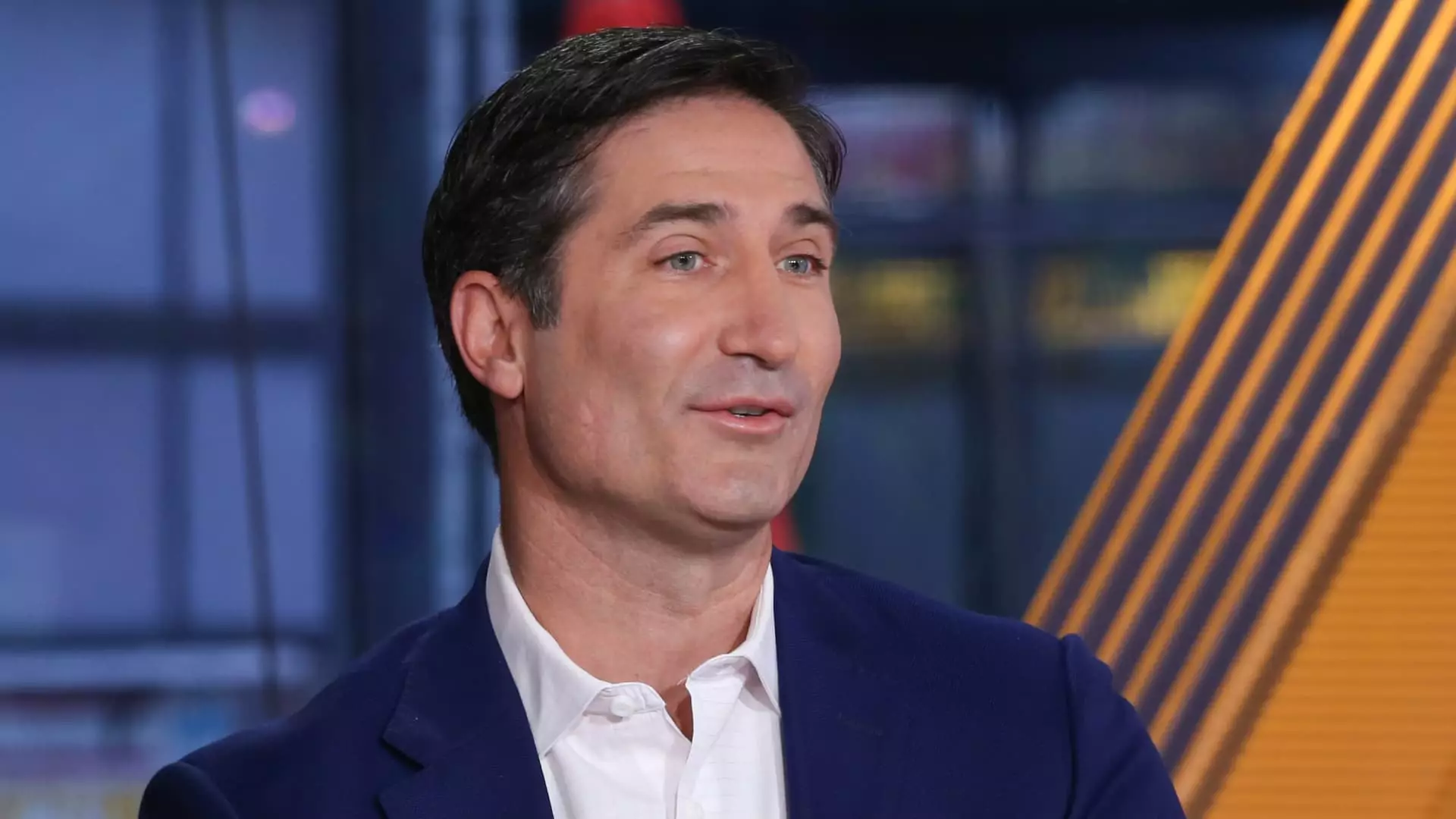In a revealing report released on Tuesday, Starbucks disclosed that its same-store sales have declined for the fourth straight quarter. Despite this troubling trend, the coffee juggernaut managed to exceed Wall Street expectations in terms of quarterly earnings and revenue, showcasing the complexities of its current business landscape. The company reported earnings per share of 69 cents, slightly surpassing the anticipated 67 cents, along with a revenue of $9.4 billion compared to a forecast of $9.31 billion. However, the stark reality of a net income drop to $780.8 million—down from last year’s $1.02 billion—paints a mixed picture of resilience versus underlying vulnerability.
Starbucks’ stagnation in net sales, remaining nearly unchanged from the previous year, raises questions about the sustainability of its growth model. While the slight beat on earnings may serve as a temporary relief, it should not overshadow the significant decline in traffic to its stores, which fell by 6%. This metric is particularly alarming as it suggests a waning footfall; an issue compounded by a 4% slide in same-store sales overall. The disparity between forecasted losses and actual performance might momentarily fortify investor confidence, but it underscores a deeper malaise lying beneath.
Under the stewardship of CEO Brian Niccol, who ascended to the role in September, Starbucks is pursuing a turnaround strategy to reinvigorate its U.S. market performance, which has struggled considerably over the past year. Niccol emphasized the company’s pivot towards fundamental values, aiming to “get back to Starbucks.” This mantra indicates a renewed focus on coffee quality and enhancing the customer experience—elements that long defined the brand’s essence.
The company’s initiatives thus far have included eliminating additional charges for nondairy milk options, enhancing marketing efforts to spotlight coffee, and commencing a significant menu overhaul. These strategies appear to be receiving a “positive response,” according to Niccol, reflecting a potential for customer re-engagement. However, the real question remains: are these enough to sway the current trend of consumer disinterest?
This transformation comes against a backdrop of significant corporate restructuring. The decision to split the North American president’s role into two distinct positions highlights a growing recognition of the need for more focused leadership. Furthermore, Starbucks has recently brought in new talent from Taco Bell to diversify and enrich its corporate expertise, aligning with Niccol’s strategy to reshape its operational framework.
Starbucks’ troubles are not confined to U.S. shores. The company recorded a 4% decline in same-store sales internationally, with China, its second-largest market, witnessing a 6% slump exacerbated by aggressive price competition from rivals such as Luckin Coffee. This competitive landscape necessitates a reassessment of pricing strategies, particularly in markets where consumers are increasingly price-sensitive. The company’s choice to employ discounts in China raises further concerns about whether such a tactic is sustainable long-term or simply a stopgap measure.
The withdrawal of the fiscal 2025 forecast signals Starbucks’ recognition of the uphill battle it faces. This admission underscores the need for more robust strategies as the company plans to scale back on new store openings and renovations, redirecting capital towards its recovery efforts. Investing in revitalizing existing locations instead of expanding may be an acknowledgment of the changing consumer behavior and economic climate.
As Starbucks navigates this tumultuous period, the outcome of its strategies will be closely watched by industry analysts and investors alike. The elimination of job roles, a move that suggests an impending workforce reduction, introduces a layer of human impact to the corporate restructuring dilemma. While transactional adjustments may seem necessary, the implications for employee morale and brand reputation cannot be understated.
Starbucks stands at a critical juncture, where its efforts to realign its identity and customer relationships could define its trajectory. While profits have momentarily eclipsed losses, the underlying trends indicate that the measures taken so far may not be sufficient on their own. How effectively the company can foster a “return to roots” while also innovating in a fiercely competitive market will ultimately determine its resurgence or further decline. The road ahead is fraught with uncertainties, yet the commitment to adapt and reform remains a guiding light for the global coffee chain.


Leave a Reply